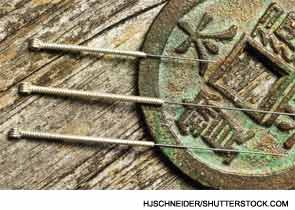Because of the wide range of differences in acupuncture interventions, including dose and intensity of the needle insertion and treatment duration, an accurate quantitative estimate of treatment effects could not be ascertained. Therefore, the evidence for acupuncture’s efficacy for pain relief in patients with RA is uncertain. The lack of standardized treatment protocols suggests that future studies should focus on the optimum dose for acupuncture therapy in patients with RA, such as effective evidence-based dose/intensity, the number of acupuncture points, duration of needle insertion, frequency of acupuncture sessions, and intervention duration. It is possible that some studies, while designed correctly from a Western scientific approach, lack the correct Chinese medical approach (i.e., inappropriate dose/intensity and duration of acupuncture and insufficient expertise of acupuncturist leading to inappropriate needle insertion and manipulation techniques).

Mind–Body Therapy for RA
In the past two decades, the literature has consistently recognized the potential therapeutic benefits of Tai Chi mind–body exercise for chronic conditions. Significant improvement has been reported in balance, strength, flexibility, cardiovascular and respiratory function, mood, depression and anxiety, self-efficacy, pain reduction, and health-related quality of life in diverse Eastern and Western populations. It is clear that many of our patients with musculoskeletal disease are interested in seeking this type of exercise. Tai Chi may be beneficial to patients with RA as a result of its effects on muscle strength, stress reduction, and cardiovascular and bone health, as well as improved health-related quality of life. According to the 2007 National Health Interview Survey, around 2.5 million Americans have practiced Tai Chi, and that number is increasing. Preliminary studies showed that Tai Chi significantly improved mood and sleep disturbances, and decreased pain and fatigue in patients with RA.
My colleagues and I conducted a pilot randomized, controlled trial of 20 patients with functional class I or II RA who were randomly assigned to Tai Chi or control in twice-weekly sessions for 12 weeks.7 At the end of the trial, five out of 10 patients randomized to Tai Chi achieved an ACR20 response compared with none in the control (P=0.03). Patients who practiced Tai Chi had greater improvement in their disability index (P=0.01), depression index (P=0.003), and vitality subscale of the Medical Outcomes Study 36-item Short-Form General Health Survey (P=0.01). No adverse events were observed and no patients withdrew from the study, suggesting that Tai Chi is safe and may be beneficial for functional class I or II RA. Though other studies did not find that Tai Chi resulted in such robust improvement, a Cochrane review examining the evidence from four clinical trials suggested that it does not exacerbate symptoms of RA and may provide some benefits on lower extremity range of motion, particularly the ankle joint.
Tripterygium Wilfordii Hook F and RA
In traditional Chinese medicine, extract of the roots of Tripterygium wilfordii Hook F (TWHF) plants has been widely used to treat autoimmune and inflammatory disease. Several clinical trials have examined the therapeutic effects of TWHF in patients with RA. A prospective double-blind, placebo-controlled trial of 35 patients over 20 weeks found that four patients who took a low dose (180 mg/day) of the extract and eight patients who took a high dose (360 mg/day) met criteria for clinical response.8 The authors concluded that the ethanol/ethyl acetate extract of TWHF, at a dosage of 360 mg/day, appeared to be safe in patients with RA.
